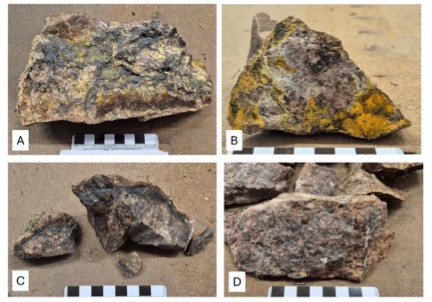North Sweden – Virka, Rävaberget, Trollberget and Björkberget
Strategic portfolio in the heart of the Arvidsjaur-Arjeplog uranium province boasting high grade uranium up to >5.9% and high-grade lead-zinc mineralisation up to 9.8% Zn, 9.15% Pb at surface.
Overview
Target Type
Shear-hosted and granite-hosted uranium and base metals (Zn-Pb-Ag, Cu+/-Au) mineralisation.
Ownership
100%
Location
Located in northern Sweden, within the Arvidsjaur-Arjeplog uranium district, neighbouring several polymetallic belts (VMS, orogenic gold).
Landholding
219 km2
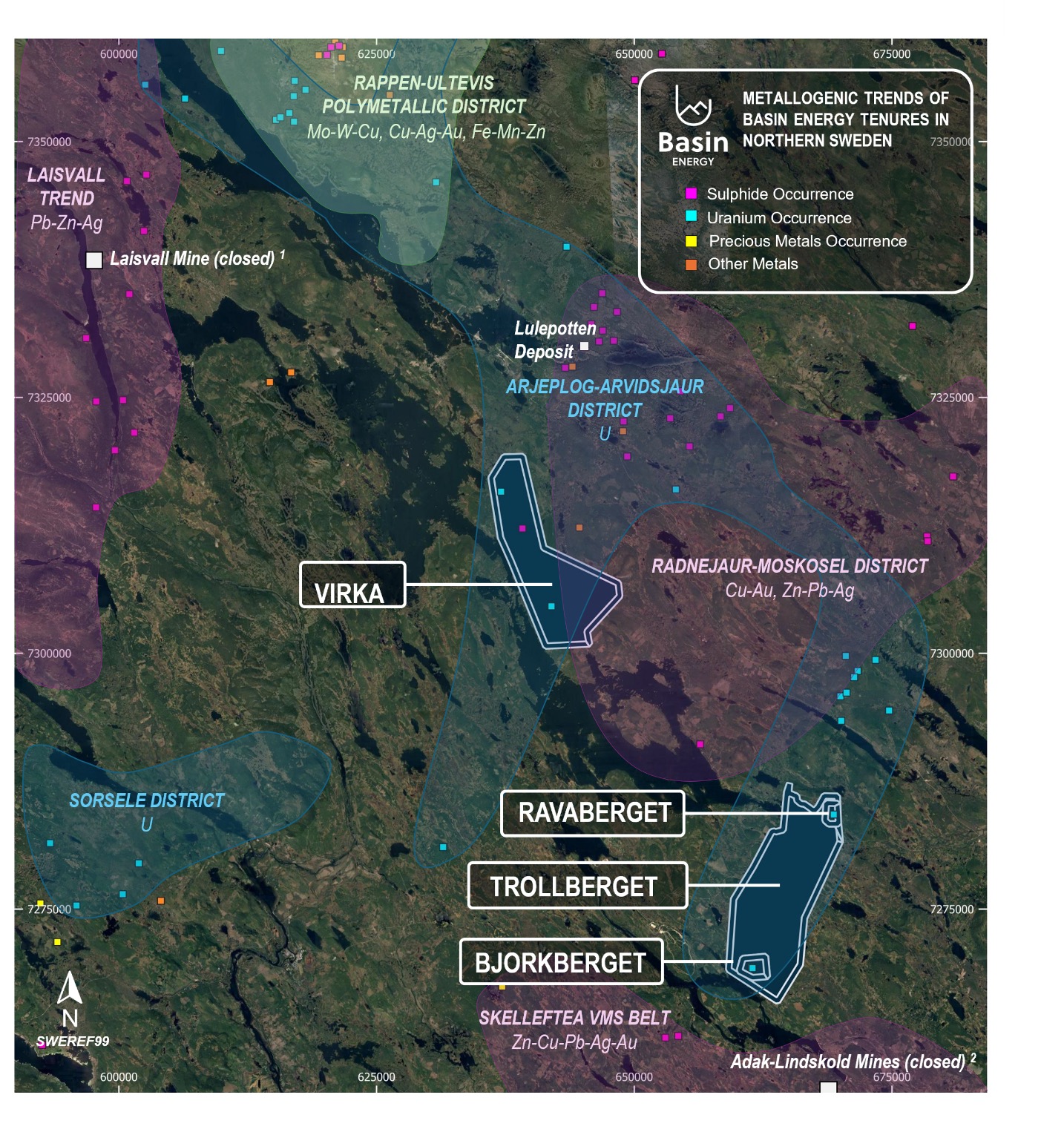
Highlights
The projects are strategically positioned in a highly prospective metallogenic belt within the Fennoscandian Shield, hosting a diverse range of mineral deposits: volcanogenic massive sulphide (VMS), orogenic gold, and holds a strong potential for shear-hosted and epigenetic uranium and/or REE mineralisation. Geologically, the area is dominated by Proterozoic-aged metavolcanic sequences and extensive granitoid intrusions, and is structurally complex due to multiple orogenic events, particularly the Svecofennian orogeny.
Early works from the 1970’s and 1980’s by the Swedish Geological Survey (“SGU”) in the area targeted uranium and various base/precious metals. Early regional mapping and boulder tracing revealed numerous anomalies in lead, zinc, silver, molybdenum, and copper in the area that were not fully followed up. Diamond coring targeting uranium occurred at the Björkberget and Rävaberget projects which highlighted shear-hosted uraninite mineralisation and uraninite impregnations in granite.
Since acquisition in Q4 2024, Basin Energy conducted an initial reconnaissance mapping and sampling program (45 rock chip samples collected and analysed) and has completed structural logging and sampling of 59 priority historical drill holes from the Virka, Björkberget and Rävaberget projects.
Best uranium intercepts to date (surface rock chip sampling):
Björkberget
Pulp re-analysis of 2 samples above detection limit (>2.95 U3O8) by fusion XRF from 2024 field mapping :
- BJK004: Exceeded detection limits again returning >5.9% U3O8 and Pb 1.39%, Fe 23.4%, 0.13% TREO (74% HREO) from granite boulder sample with visible yellow oxide staining located at the base of an outcrop.
- BJK008: Returned 5.4% U3O8 and Pb 1.85%, 0.12% TREO (49% HREO), 522 ppm Mo from fine-grained granite boulder sample with visible mineralisation and yellow oxide staining located at the base of an outcrop.
Virka
- High-grade zinc-lead mineralisation: mineralised veins observed in outcrop returning up to 9.8% Zn, 9.15% Pb, 425 ppm Ag and 0.33% Cu.
- Uranium identified in separate outcrop associated with mineralised veins up to 1.43% U3O8 and 0.13% TREO.
- Anomalous boulder samples identified with mineralised veins including 0.27% U3O8, 0.17% lead and 0.11% TREO.
Rävaberget
- RAV002: 0.55% U3O8, Pb 8650 ppm, Ag 28 ppm.
Technical Maps
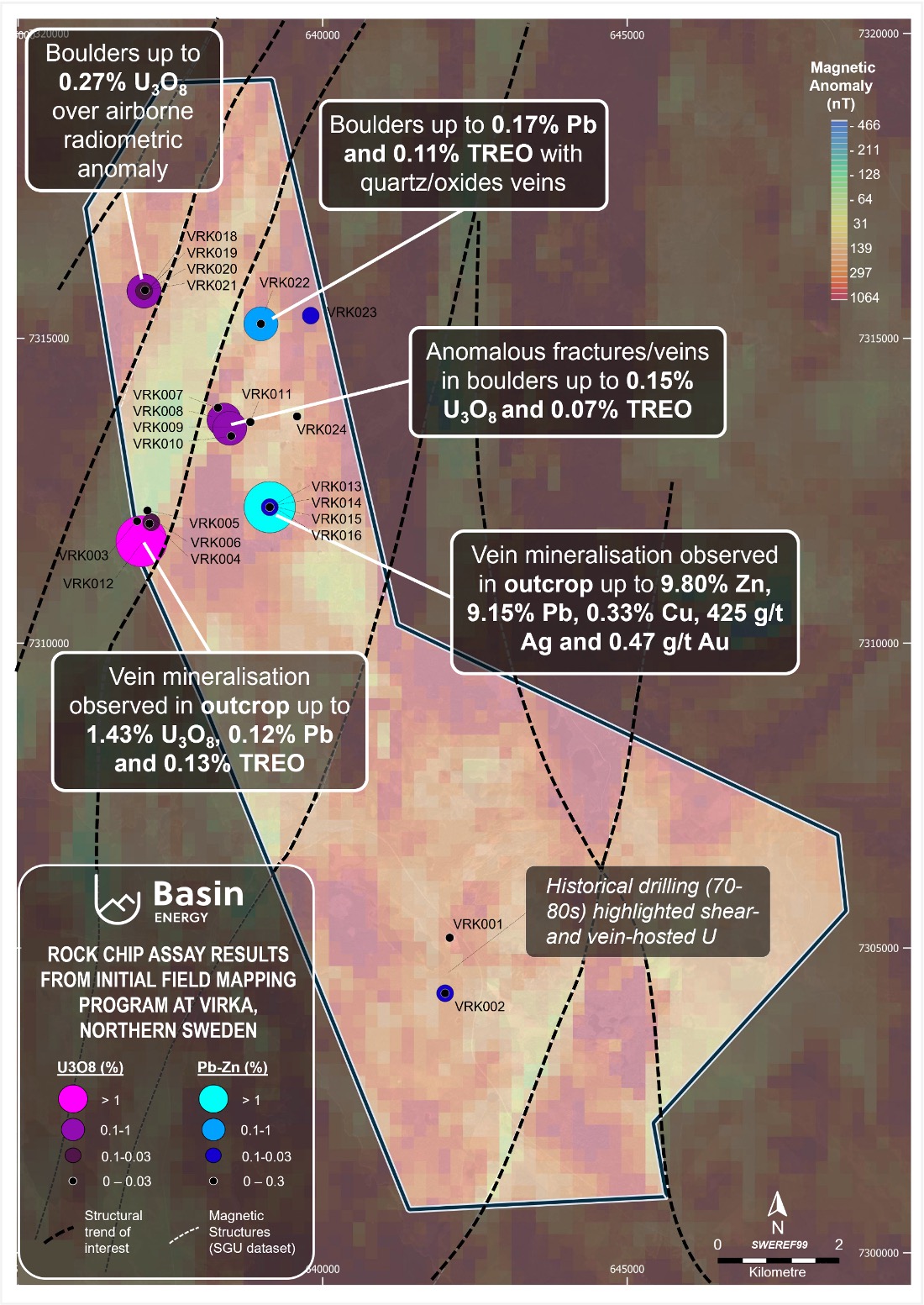
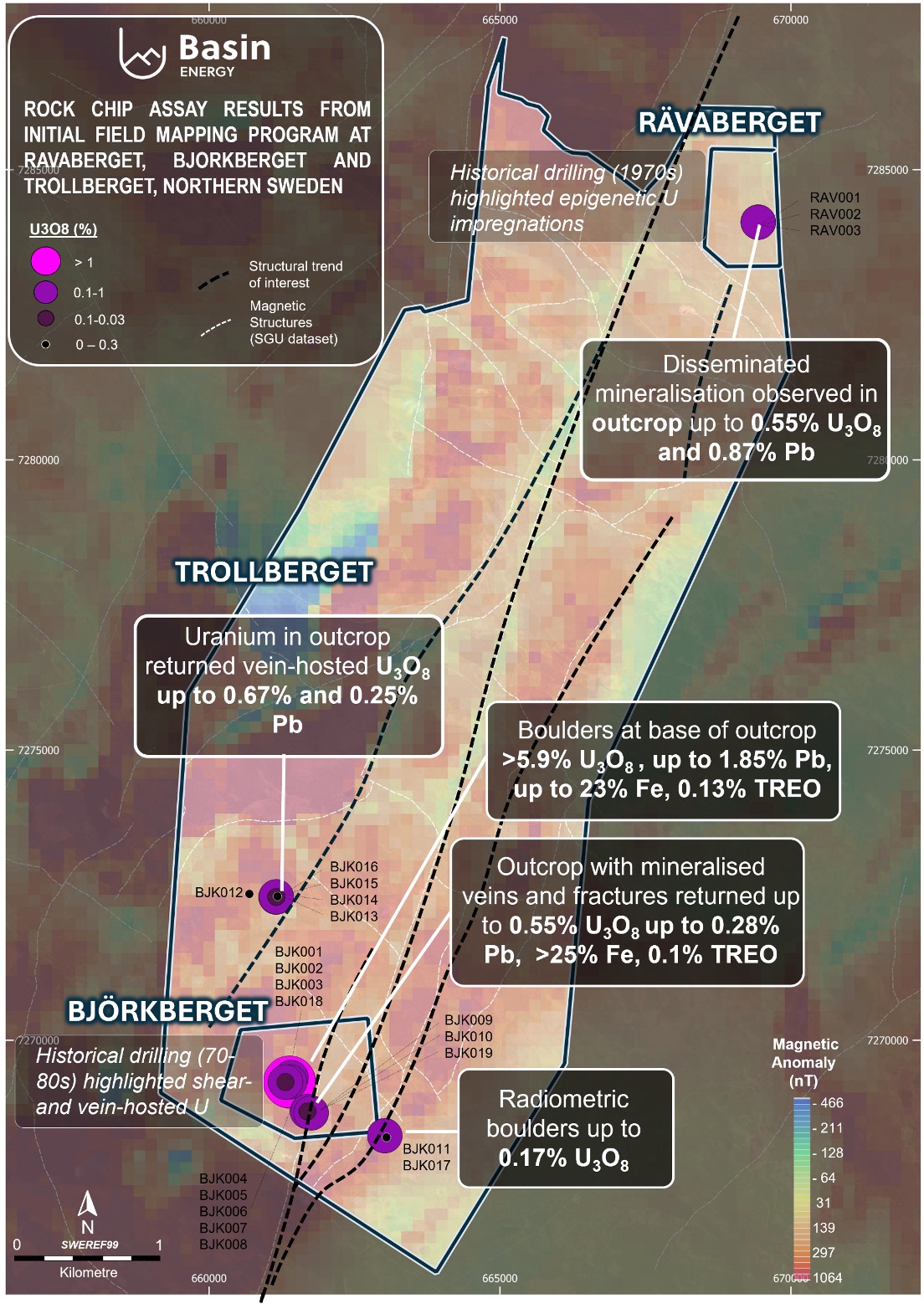
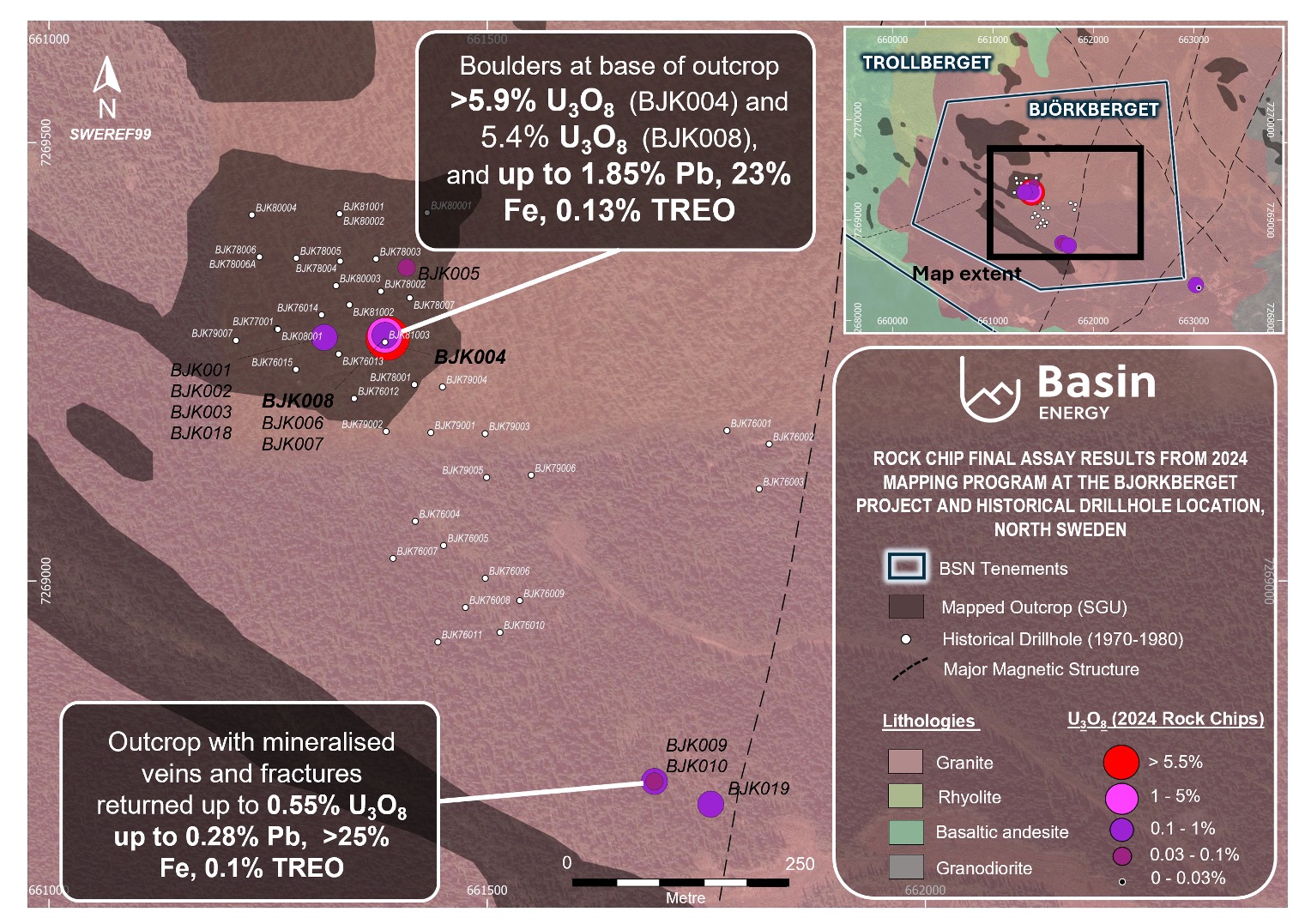
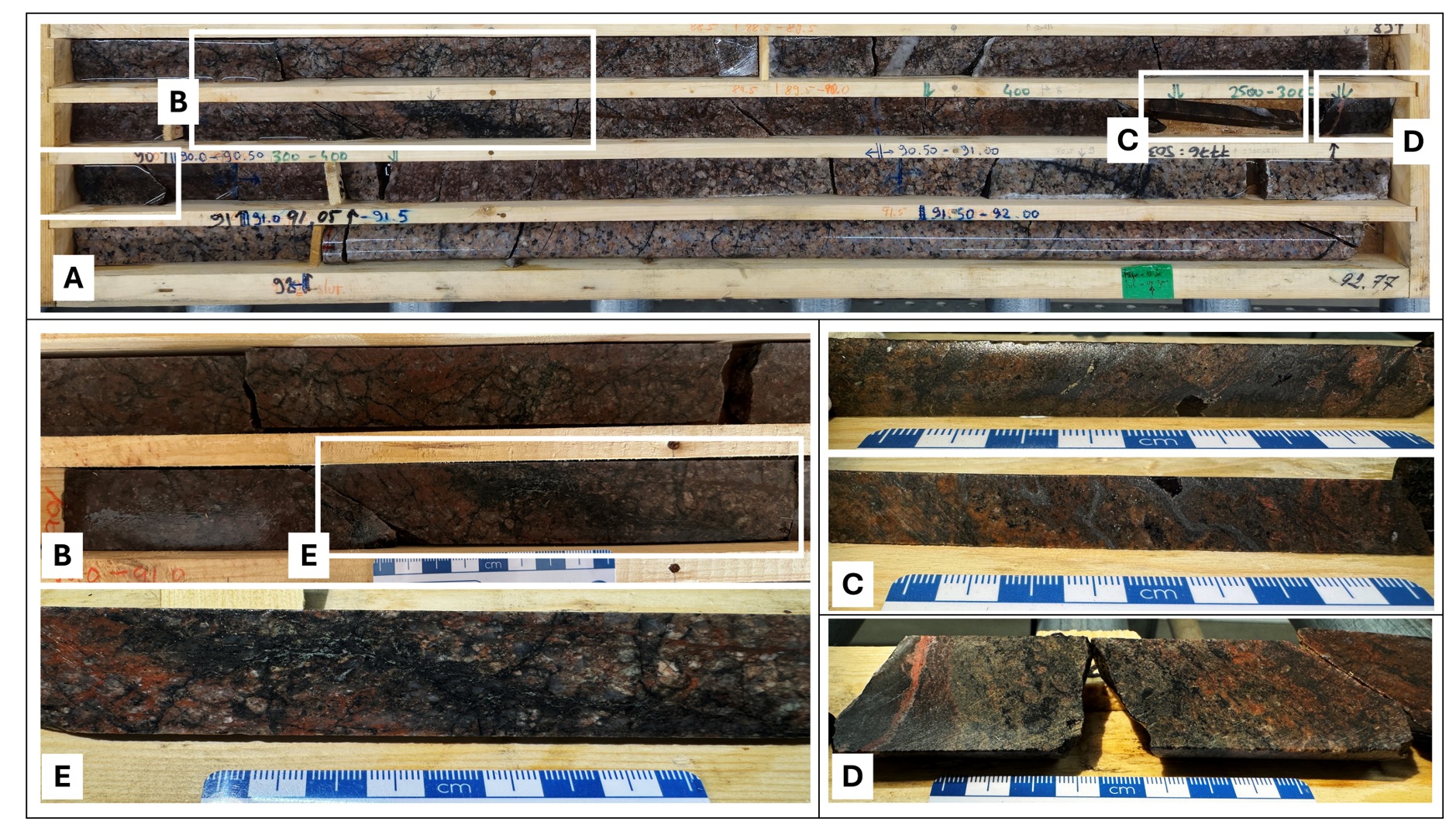
A. Photograph of core interval between 89.0-92.8 m showing half core remaining where it has been historically sampled, with only quarter core remaining for the most radiometric anomalous interval “C” (limiting ability resample using chemical assay). B. Close up photograph of magnetite/hematite vein stockwork. C. 10 cm interval displaying uraninite nodules in magnetite/hematite veins. D. Mineral zonation in footwall of mineralised interval. E. Close up photograph of magnetite/hematite vein stockwork.
* Visual estimates of mineral abundance should never be considered a proxy or substitute for laboratory analyses where concentrations or grades are the factor of principal economic interest. Visual estimates also potentially provide no information regarding impurities or deleterious physical properties relevant to valuations. Refer to Appendix 2 for visual mineral abundance estimations. Assay results for core displayed in Figure 2 (BJK78006B) are expected to be reported late April to early May 2025; samples from BJK76014 (Figure 1) were just sent to the laboratory with results expected early Q3 2025.
